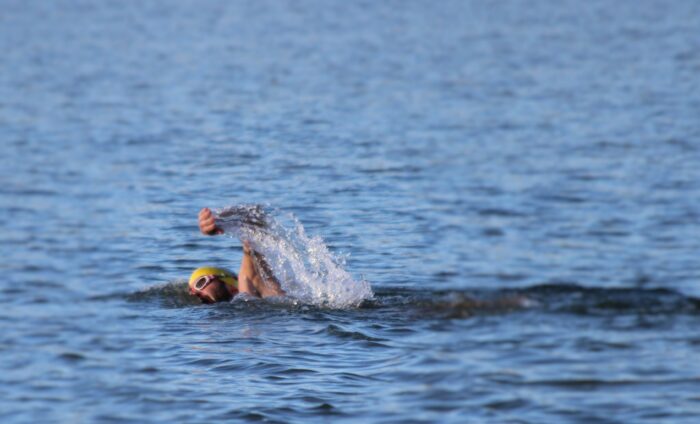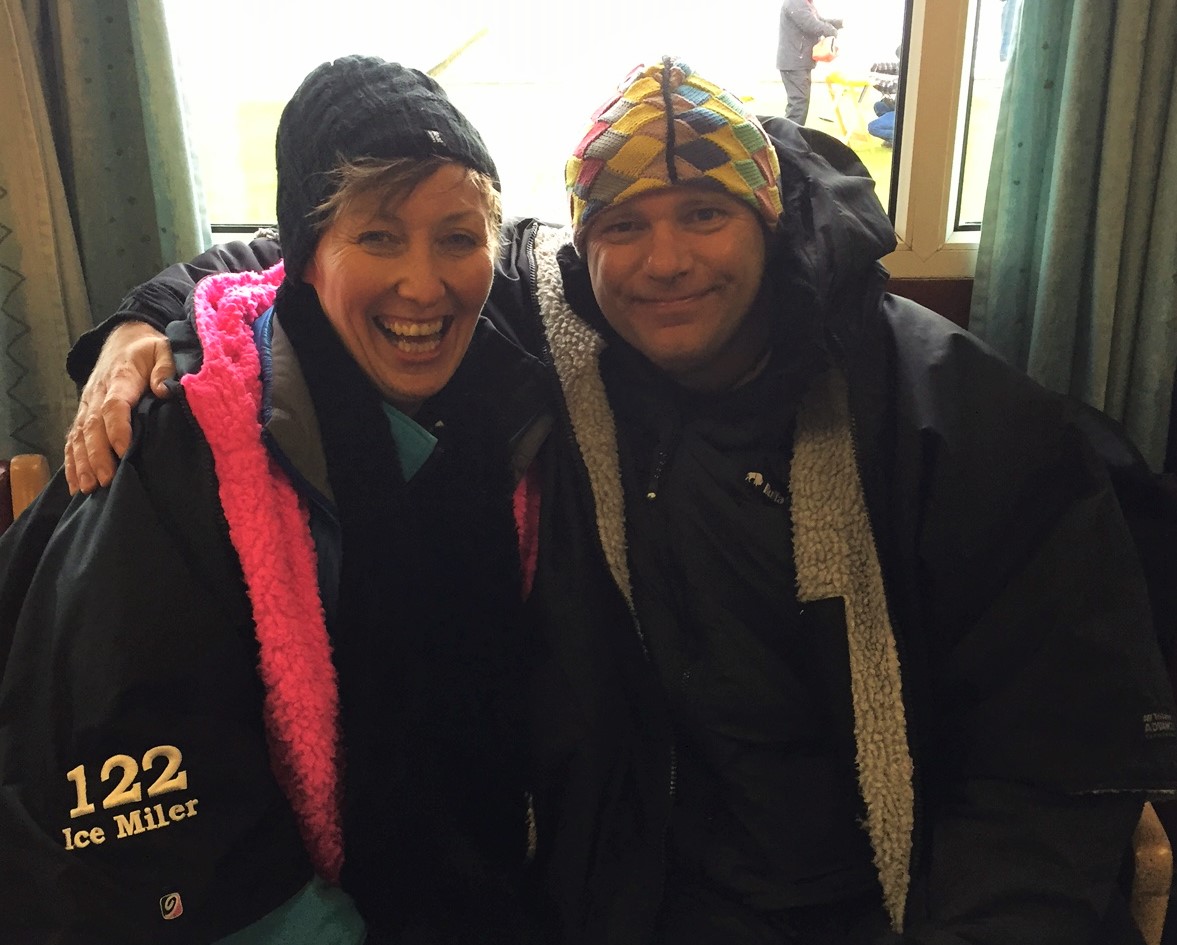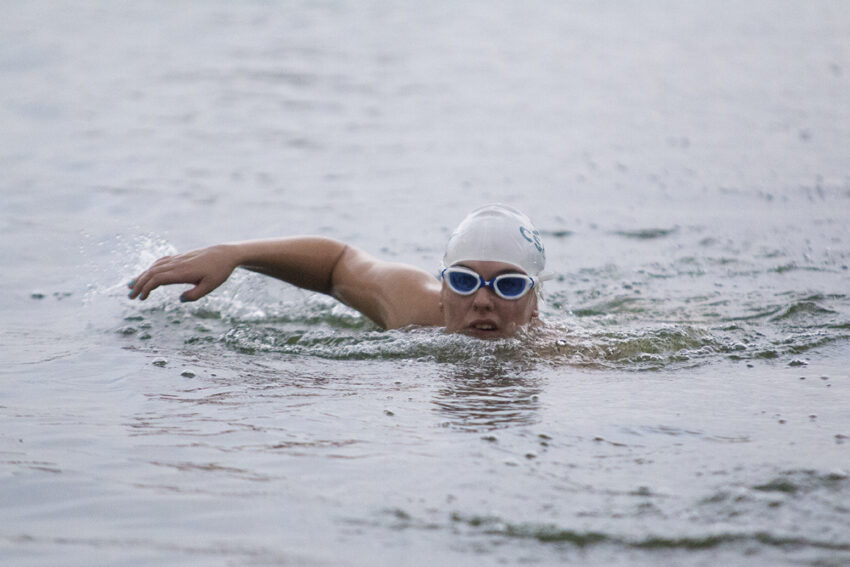
‘I want to swim an ice mile, how do I train for it?’
What is an ice mile?
An ice mile is a one-mile swim under International Ice Swimming Association rules in water temperature of 5 degrees Celsius or less wearing just a standard costume, goggles and one swim hat.
Find out more: internationaliceswimming.com
Take your time
I’m often asked: ‘I want to swim an ice mile, how do I train for it?’ The simple answer is that you take your time and train steadily over several seasons of winter swimming in order to prepare your body for one of the toughest swims on the planet. An ice mile is not to be taken lightly – it carries the same risks as other extreme sports and can be very dangerous if you are unprepared.
Each individual reacts differently to the strain of cold water immersion but it is recommended that a doctor’s check-up, with an emphasis on heart and blood pressure, is carried out before taking up cold water swimming. A recent (within three months) ECG is mandatory under International Ice Swimming Association rules for any Ice Mile attempt.
Getting colder
A tried and tested method used to train for Ice Miles is to ‘just keep swimming.’ That means swimming outdoors all year round. In early autumn make sure you swim in fresh water at least once a week. Freshwater cools down much quicker than the sea and will end up colder (the sea rarely reaches 5 degrees unless you are a long way north). Ice mile rules mean that you are not allowed to take advantage of a known current, so although you can train in a river, an Ice Mile itself is best done in standing water such as a lake or outdoor pool.
Once a week is really the minimum you can get away with to acclimatise safely. This needs to be supplemented by other cold water exposure, such as sea swimming or even cold showers and ice baths. If you can only actually swim once a week then it will take you longer to be comfortable with being cold for a sustained period of time.
An Ice Mile typically takes at least 20 per cent longer than your time for a mile in the pool due to the strains placed on your body by having to battle the cold. Blood flow to your limbs is reduced as it is retained in your core to help keep your vital organs warm – and this will affect your speed. Take this into account when predicting your Ice Mile time and use your predicted time as the basis of your training schedule and to plan the amount of time you spend in the water each session.

Wendy Figures and Ray Smith celebrate their Ice Miles
When you first get into cold water you will probably experience ‘cold shock response.’ The first component of cold shock response is an automatic gasp reflex. If the head is underwater, water may be breathed into the lungs, resulting in drowning. It is therefore not recommended to jump or dive in.
A much safer option is a controlled entry to the water. This can be a steady walk in from the shallows or a ‘1, 2, 3 – dunk’ to immerse yourself from waist to shoulder height. Splashing cold water on the back of your neck or face as you enter can help your body to prepare for what it is about to experience.
Your blood pressure and heart rate may increase as your body realises it is going into a dangerously cold environment, so to keep yourself calm and composed do a few strokes of breaststroke before submerging your head. This gives you a chance to catch your breath and prepare mentally for the swim.
Okay, so now you’re in, you’ve caught your breath and you’re ready to start your swim. At this point every fibre of your being is screaming at you to get out! Ignore these thoughts – it is normal to feel like turning round and going home at this point. Swim for 50 strokes and then you’ll find that these voices fade and you will start to feel a little more comfortable. Once you get through the first few minutes your body settles down and starts the physiological processes that will enable you to stay in the water. To successfully swim, controlling your breathing is paramount. Initially try not to get out of breath as the cold makes it a lot harder to ‘catch your breath’, which for an inexperienced ice swimmer can reduce the time you can tolerate the cold significantly.
Your hands and feet will become cold as your body restricts the blood flow to your extremities in order to protect your core and insulate your vital organs. As your body no longer wants to pump blood to the extremities, blood pressure is affected and breathing can slow as less oxygen is needed. If you start to feel happy and warm get out of the water immediately as this is one of the first signs of hypothermia.

16-year-old Hazel Killingbeck on her way to completing her Ice Mile
It’s not over until after the afterdrop
So you’ve set your time limit, swum your training swim and now it’s time to get out of the water – this is where the test of your acclimatisation begins.
Beware that when you first stand after swimming for a while you may feel dizzy because of the effect the cold has on your blood pressure. It is useful to have a helper to assist you getting out of the water.
Don’t hang around when you’re out! There is a vital window of 10 minutes before the afterdrop hits – by which time you need to be dry, dressed and have a warm drink inside you. An extra set of base layers (especially socks) can be useful.
The afterdrop occurs when all that warm blood that has been protecting your core starts recirculating out to your extremities. That means that the cold blood in your extremities is recirculating back into your core and chilling your vital organs including your heart. This is potentially dangerous and can shock your system.
It takes about 10 minutes for this recirculation to start to chill you. You will become colder than you were in the water. Extreme shaking may occur and it is really important to be wrapped up snug and warm. A top tip is to keep your swim hat on until the last minute before replacing it with a very warm hat.
The day of your Ice Mile is not the ideal day to find out if you are capable of it. You need to train safely over a period of time so that you know you can do it without risk to yourself – or others who may need to rescue you if you’ve got it wrong. An Ice Mile counts at 5 degrees or less so make life easy for yourself and pick a venue at 4.5 or 4.9 degrees rather than something substantially colder. Once you have an Ice Mile under your belt you may choose to push your limits and make it colder, but for your first time be kind to yourself.
And finally…
You’ve swum your swim and have completed the distance in 5 degrees or less – but it’s not an Ice Mile until it is formally ratified by the International Ice Swimming Association. Until then it is simply a ‘nice mile.’ But once your swim has been ratified then you will be entitled to wear the uniform of a very exclusive club of extreme swimmers, the coveted Ice Mile Red Jacket.
SAFETY TIPS FOR ICE TRAINING
● Always have a watcher on shore and a fellow swimmer in the water with you to assist if you get into difficulty.
● On exiting the water you need to get dry and dressed immediately. Dry and dress your top half and torso first.
● If training in open water a tow float is allowed under IISA rules. This can be easily seen by your spotters on shore, although it should not be relied upon as a piece of life saving equipment.
● Set your time limit before you get in and stick to it. Your swim is not over until after you are dry and dressed and have gone through the ‘afterdrop’.
● Take a note of the water temperature and time you have spent in the water for each swim. This will help you recognise your limits.
● Alcohol and swimming don’t mix. Alcohol and ice swimming really don’t mix!
● Let your body warm up slowly and naturally after a swim. Don’t jump straight into a warm shower or bath until you are warmed up.
● Get up and walk around to help gently warm up.
● Drink hot drinks such as hot chocolate, Bovril or soup.






